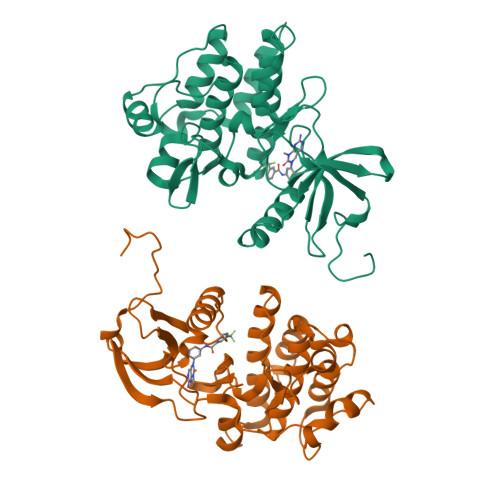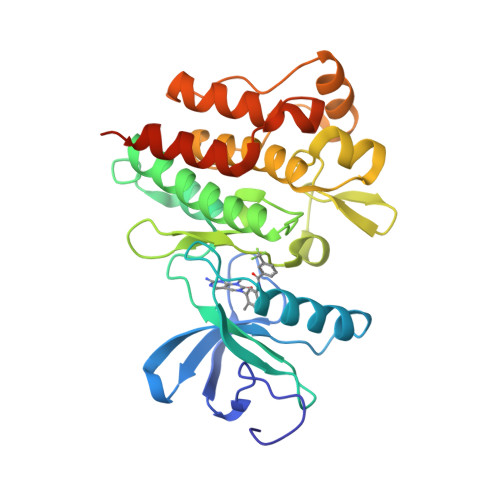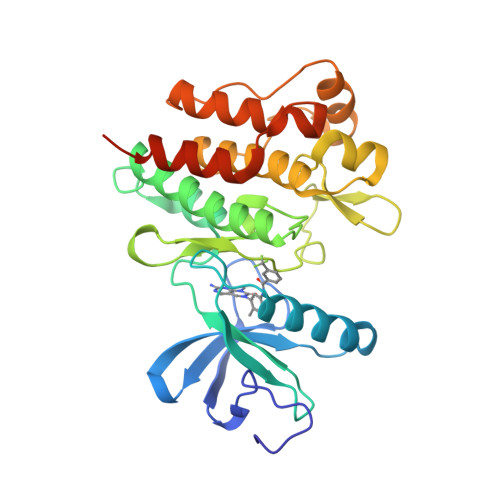A general strategy for creating
Okram, B., Nagle, A., Adrian, F.J., Lee, C., Ren, P., Wang, X., Sim, T., Xie, Y., Wang, X., Xia, G., Spraggon, G., Warmuth, M., Liu, Y., Gray, N.S.(2006) Chem Biol 13: 779-786
- PubMed: 16873026
- DOI: https://doi.org/10.1016/j.chembiol.2006.05.015
- Primary Citation of Related Structures:
2HIW - PubMed Abstract:
Kinase inhibitors that bind to the ATP cleft can be broadly classified into two groups: those that bind exclusively to the ATP site with the kinase assuming a conformation otherwise conducive to phosphotransfer (type I), and those that exploit a hydrophobic site immediately adjacent to the ATP pocket made accessible by a conformational rearrangement of the activation loop (type II). To date, all type II inhibitors were discovered by using structure-activity-guided optimization strategies. Here, we describe a general pharmacophore model of type II inhibition that enables a rational "hybrid-design" approach whereby a 3-trifluoromethylbenzamide functionality is appended to four distinct type I scaffolds in order to convert them into their corresponding type II counterparts. We demonstrate that the designed compounds function as type II inhibitors by using biochemical and cellular kinase assays and by cocrystallography with Abl.
Organizational Affiliation:
Department of Chemistry and the Skaggs Institute for Chemical Biology, The Scripps Research Institute, La Jolla, California 92037, USA.




















